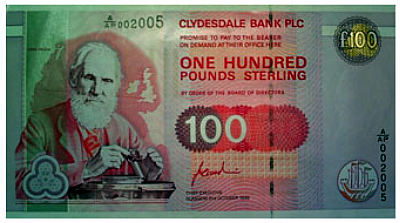Absolute Energy
On June 26, 1824, British mathematician, physicist, and inventor Sir William Thomson, Lord Kelvin, was born. A student-researcher of many natural phenomena, Thomson spent his life learning and applying his knowledge and expertise to them all and, often, simultaneously. Lauded as a giant of 19th century science and its most famous scientist, he believed that all science is one science. He left a record of great insights, inter-disciplinary applications (from undersea amplifiers to marine compasses), and fundamental contributions to thermal physics, electromagnetism, and optics.
Thomson held a legendary disregard for the cobble of English measure, preferring the metric system’s decimalized convenience. In his 20s, Thomson developed an absolute scale of temperature that became known as the Kelvin Scale. Unlike the Fahrenheit or Celsius scales that are based on states of water, Kelvin’s scale is independent of the physical properties of any specific substance. Used in physics and astronomy, the kelvin is a measurement of heat energy whose scale starts from absolute zero, eliminating negative measurement, and ideal for working with both cold and heat extremes of a substance.
Thomson worked with other scientists and researchers, advancing knowledge in many fields. He encouraged Faraday in his research that led to the discovery of the Faraday effect, establishing that light and magnetic/electric phenomena were related. He supported Joule’s mechanical equivalent of heat, and helped change the concept of heat to an understanding of the energy of molecule motion. Along with other mathematical physicists, Thomson put thermodynamics on a firm scientific basis.
Applying the analogy of heat flow to electrical flow, Thomson published “The Uniform Motion of Heat in Homogeneous Solid Bodies, and its Connection with the Mathematical Theory of Electricity”, which may not have been the catchiest of titles but demonstrated his understanding of resistance and other properties that applied directly to the long cables of the transatlantic telegraph line that was about to be laid. He improved the design of the cable, and, being the problem-solving, scientist-inventor he was, travelled on the ships supervising the laying of it while he continued to improve its signal capability.
Thomson believed that if he could measure something, he could describe it efficiently and usefully. He created or improved a device for every measurable unit of electricity of his age.
He introduced the term kinetic energy.
Knighted for specific service and, later raised to his peerage, Lord Kelvin became Britain’s first scientific peer of the realm. He was interred at Westminster Abbey, close to the final resting place of Sir Isaac Newton. His name is honoured, from the Kelvin Nanocharacterisation Centre of his beloved University of Glasgow, throughout the world in school and place names, physics medals, science prizes, scientific instruments, and … even to the commercial line of Kelvinator food refrigerators and freezers.

B Bondar / Real World Content Advantage